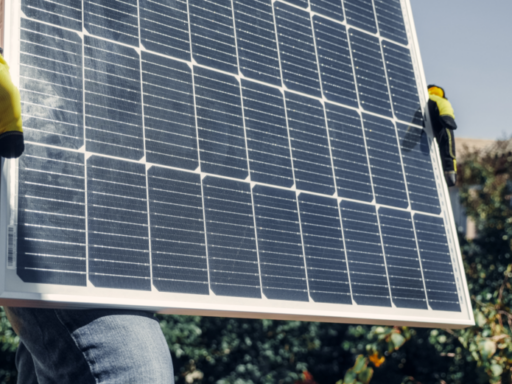Choosing the right number of solar panels is simpler with a clear plan. This 2025 guide explains factors that influence system size, shows how to estimate the number you will need, and sets expectations for roof space, cost per watt, savings, and payback. It also answers common questions people search for. The steps are practical, so you can calculate a sensible target and speak with an installer.
What determines how many solar panels you need?
Your annual electricity usage
Your annual electricity usage is the starting point. Add up the last twelve months of bills to find the total kWh. As a reference point, Ofgem’s typical-use household is 2,700 kWh per year. A typical household uses 2,500 to 4,500 kWh per year, with higher usage for electric heating, EVs, or hot water.
Higher usage requires a larger solar panel system to offset demand. If you plan new loads, include them. Track power consumption from major loads and consider average energy usage over the year.
Solar panel wattage and efficiency
Modern residential solar panels usually range from 400 W to 450 W per module, with high efficiency options above that. Higher wattage solar panels produce more energy per module, so you need fewer to reach a target system size. Cell technology, temperature behaviour, and inverter selection affect production. Good designs allow for realistic losses and a sensible, specific yield, so your solar panels deliver dependable production.
Sunlight hours and roof conditions
Peak sun hours vary by geographic location and sunlight exposure; roof orientation and shading matter. Roof orientation, tilt, shading, and usable roof size influence how many solar panels you can fit and how much energy the array will produce. South-facing rooftops with minimal shade yield well. East and West work with a modest drop. When space is tight, high efficiency solar panels help.
How to estimate your solar system size?
A practical way to estimate system size is to convert annual kWh into a target array, then divide by panel wattage. In the UK, use specific yield in kWh/kWp/year. For a first pass, use an average specific yield of 800-1,100 kWh/kWp per year, depending on location and roof specifics. Workflow:
- Find annual kWh from bills.
- Choose a specific yield suited to your area.
- Divide annual kWh by that yield to get system size in kWp.
- Divide by panel wattage to estimate the number of solar panels.
If you are asking “what size solar system do I need?”, this method gives you a starting point you can calculate and refine with a professional survey that considers shade, roof geometry, and inverter choice. Keep bills handy, compare expected production against usage, and calculate a first-pass design.
If your household has steady daytime demand from things like heat pumps, home offices, or EV charging, evening energy demand may justify a small battery, and you can justify a slightly larger set of solar panels because you will use more generation directly.
Average number of solar panels for a home
Below is a table showing home size, annual energy use, and an estimated panel count for 415 450 W solar panels, assuming an implied yield. Confirm the layout with a professional design.
| Home size | Annual energy use (kWh) | Estimated number of panels |
| Apartment or small home | 2,000 | 5 |
| 2–3 bedroom home | 3,000 | 7 |
| 3–4 bedroom home | 4,000 | 9 |
| Large home | 6,000 | 14 |
| Very large home | 8,000 | 19 |
How much roof space do you need?
Roof area depends on system size, panel dimensions, and layout. Standard solar panels are about 5.5 to 6.5 ft by 3.25 ft, which is roughly 18 to 21 sq ft each. Mounting gaps and walkways add spacing.
The table below assumes 450 W solar panels and a conservative 20 sq ft per panel for layout planning. Knowing the average size of a solar panel helps you translate a kW target into the number of frames that fit neatly on the roof.
| System size (kW) | Number of panels | Required roof area (sq ft) |
| 2 kW | 5 | 100 |
| 3 kW | 7–8 | 140–160 |
| 4 kW | 9 | 200 |
| 5 kW | 11 | 240 |
| 6 kW | 13 | 300 |
| 8 kW | 18 | 380–400 |
| 10 kW | 22 | 480 |
Cost of solar panels in 2025
Average cost per watt and system size
Installed pricing is often discussed as the installation cost per watt. The overall installation cost depends on installation factors, solar panel cost, and labour. The total project cost depends on the equipment choice, roof complexity, scaffolding, electrical works, and extras such as a battery or an EV charger.
Larger systems often achieve a lower cost per watt because fixed costs are spread across more capacity. When reviewing quotes, focus on system size, panel output, BOS components, and warranties. Ask suppliers to clarify inclusions, panel count, inverter model, and allowances for scaffolding, monitoring, or aftercare.
If you plan to expand later, confirm that the solar array design and inverter selection allow future additions without rework. Datasheets list solar panel watts per square meter and panel output so you can compare models.
What drives quotes up or down
Quotes rise with complex roofs, fragile tiles, long cable runs, and difficult access. They fall when layouts are simple and the inverter sits near the consumer unit. Higher efficiency modules and hybrid inverters often cost more. Ask for an itemised price for panels, the inverter, mounting, monitoring, and labour so that you can compare like-for-like. Clear itemisation makes it easier to calculate realistic production and expected savings.
Solar ROI and payback period
Solar panels reduce the amount of electricity you buy from the grid. Savings depend on your tariff, daytime self-consumption, and any export credit. Payback is faster when you use solar energy as produced and shift flexible loads.
A modest battery can increase evening self-consumption. Aim for a healthy energy offset and a tidy installation to support energy savings and energy independence.
Are solar panels worth it for your home?
Solar panels are worth it when your site has a suitable roof, your annual electricity usage is high enough to benefit, and you install a well designed solar energy system that matches your needs. They improve energy independence, reduce exposure to rising electricity prices and electricity volatility, and lower your carbon footprint.
For many households, first size the solar panel system to cover a solid share of demand, with space to add more later. Document the solar installation requirements and roof area early to simplify planning. Clean cable runs, accessible inverters, and quality mounting keep maintenance simple.
FAQ – how many solar panels do I need
How many solar panels do I need to power a house?
Divide annual kWh by a realistic method, convert to kWp, then divide by your chosen wattage. For a 3,500 kWh household using 450 W solar panels and a representative UK average yield, you land near nine solar panels. If you prefer “how many solar panels are needed to run a house”, the calculation is the same.
How much photovoltaics do I need for 3,000 kWh?
With a sensible UK-specific yield, 3,000 kWh requires around 2.7-3.5 kWp of array capacity. Using 450 W residential solar panels, the estimate is about seven modules. If you are asking “how many kWh do solar panels produce” for your roof, your installer will use local sun hours to refine the figure.
How many solar panels for a 4 kW system?
A 4 kW solar panel system usually consists of ten modules when using 400 W to 450 W solar panels. If your chosen modules are higher wattage, you may need nine solar panels. Lower wattage could require eleven or twelve solar panels. Many ask, “How many panels in a 4kw solar system?” The answer is the same, with minor variation depending on module rating.
How many panels for off-grid living?
Off-grid designs start with daily energy needs, battery autonomy, and winter sun hours. Because winter sun is limited, off-grid solar homes often use more solar panels and a considered setup, and they rely on storage and a backup generator for resilience. The right setup balances system size, storage, and seasonal production so your solar panels cover most needs.
How much electricity do solar panels produce per day?
A 4 kW array in the UK typically averages 8 to 10 kWh per day across the year, about 3,000 to 3,400 kWh per year, with higher days in summer and lower in winter. A simple rule, on average, is system size times local sun hours.
Can I add more solar panels later?
Yes. Many systems allow expansion. If you expect higher energy use later, choose an inverter and layout that leave space for extra solar panels, and consider stringing, roof shape, and electrical allowances. Standard connectors make expansion straightforward.
What affects how many panels I will need?
Annual electricity usage, module wattage, sun hours, shade, roof suitability, orientation, usable roof area, system losses, and your goals for energy offset all play a role. Work with a qualified installer to confirm a design that matches your budget.
Mounting gaps and access walkways add spacing. Plan solar system design to match system size and solar potential, and document the solar installation requirements and roof area early. Ask for the estimated energy production and the number of solar panels required for each proposal.
 EN
EN ES
ES DE
DE PL
PL IT
IT FR
FR GR
GR

